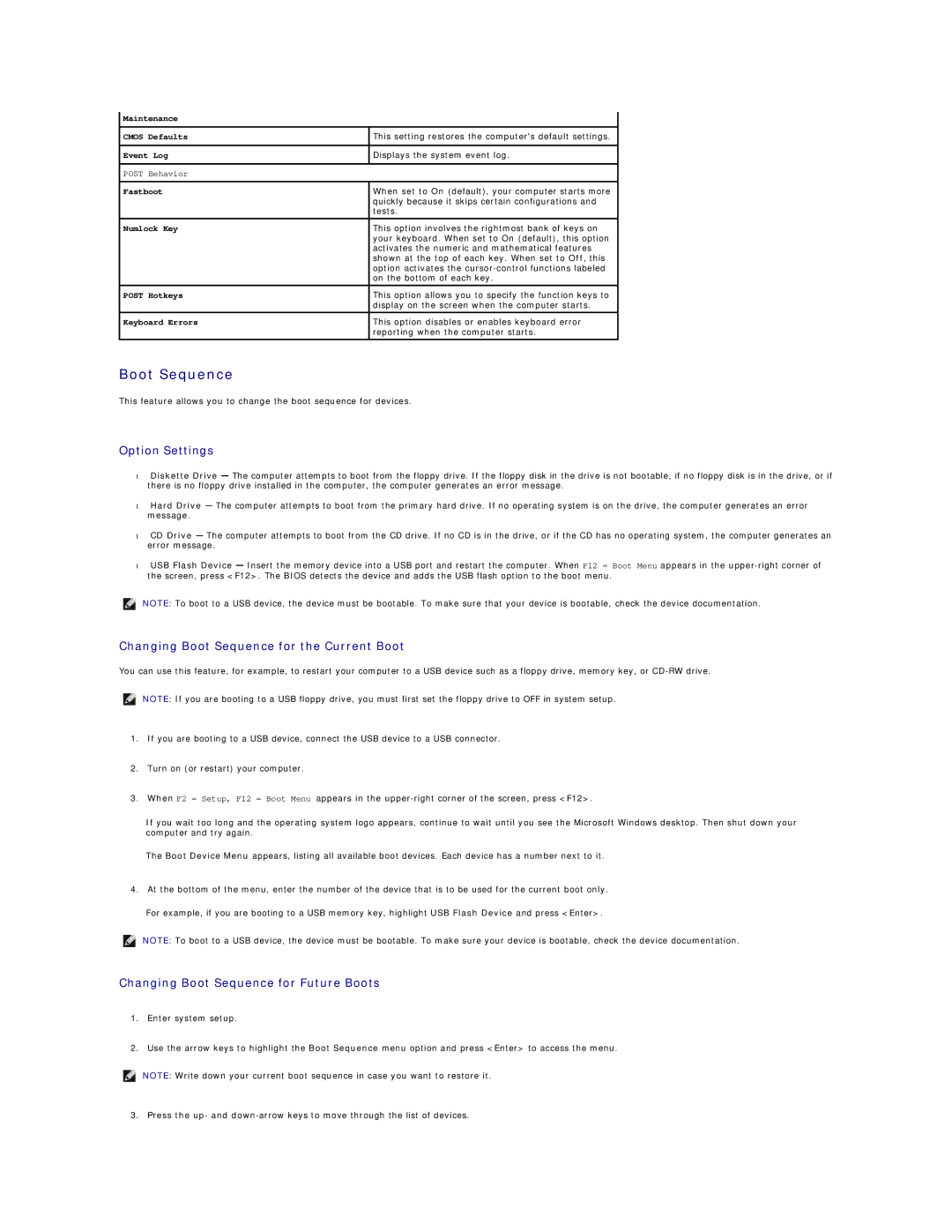
Maintenance
CMOS Defaults | This setting restores the computer's default settings. |
|
|
Event Log | Displays the system event log. |
|
|
POST Behavior |
|
|
|
Fastboot | When set to On (default), your computer starts more |
| quickly because it skips certain configurations and |
| tests. |
|
|
Numlock Key | This option involves the rightmost bank of keys on |
| your keyboard. When set to On (default), this option |
| activates the numeric and mathematical features |
| shown at the top of each key. When set to Off, this |
| option activates the |
| on the bottom of each key. |
|
|
POST Hotkeys | This option allows you to specify the function keys to |
| display on the screen when the computer starts. |
Keyboard Errors | This option disables or enables keyboard error |
| reporting when the computer starts. |
Boot Sequence
This feature allows you to change the boot sequence for devices.
Option Settings
•Diskette Drive — The computer attempts to boot from the floppy drive. If the floppy disk in the drive is not bootable, if no floppy disk is in the drive, or if there is no floppy drive installed in the computer, the computer generates an error message.
•Hard Drive — The computer attempts to boot from the primary hard drive. If no operating system is on the drive, the computer generates an error message.
•CD Drive — The computer attempts to boot from the CD drive. If no CD is in the drive, or if the CD has no operating system, the computer generates an error message.
•USB Flash Device — Insert the memory device into a USB port and restart the computer. When F12 = Boot Menu appears in the
NOTE: To boot to a USB device, the device must be bootable. To make sure that your device is bootable, check the device documentation.
Changing Boot Sequence for the Current Boot
You can use this feature, for example, to restart your computer to a USB device such as a floppy drive, memory key, or
NOTE: If you are booting to a USB floppy drive, you must first set the floppy drive to OFF in system setup.
1.If you are booting to a USB device, connect the USB device to a USB connector.
2.Turn on (or restart) your computer.
3.When F2 = Setup, F12 = Boot Menu appears in the
If you wait too long and the operating system logo appears, continue to wait until you see the Microsoft Windows desktop. Then shut down your computer and try again.
The Boot Device Menu appears, listing all available boot devices. Each device has a number next to it.
4.At the bottom of the menu, enter the number of the device that is to be used for the current boot only.
For example, if you are booting to a USB memory key, highlight USB Flash Device and press <Enter>.
NOTE: To boot to a USB device, the device must be bootable. To make sure your device is bootable, check the device documentation.
Changing Boot Sequence for Future Boots
1.Enter system setup.
2.Use the arrow keys to highlight the Boot Sequence menu option and press <Enter> to access the menu.
NOTE: Write down your current boot sequence in case you want to restore it.
3. Press the up- and
